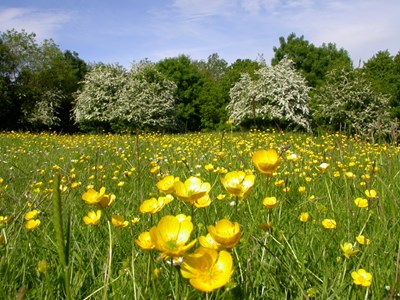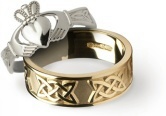Blog Categories
Blog CategoriesMay Day – The Celtic Festival of Bealtaine
 May Day, the first day in the month of May, is traditionally a landmark day in the Irish calendar. The Celtic Festival of Bealtaine (the Irish word for May), marks the official start of the Summer season and is surrounded by a rich tradition of folklore.
May Day, the first day in the month of May, is traditionally a landmark day in the Irish calendar. The Celtic Festival of Bealtaine (the Irish word for May), marks the official start of the Summer season and is surrounded by a rich tradition of folklore.
May Day is one of four important quarterly days on the calendar marking a seasonal transition. Three other noteworthy days mark the start of each of the other seasons: Spring is marked by February 1st (St. Brigid’s Day); Autumn by August 1st (Lunasa) and Winter then starts on November 1st (Samhain).
In Ireland, much of the tradition around May Day dates from the 19th century, giving a glimpse in to an earlier, more rural Ireland where superstition and a focus on the spirit world really prevailed.
We look at five Celtic traditions around May Day, which include many customs and traditions around flowers, fire and dancing.
May Bonfire
The Irish Festival of Bealtaine officially heralds the beginning of summer. The name originates from the Old Irish words bel taine (meaning 'bright fire') and bonfires were often lit on local landmarks. The most famous of these is the Hill of Uisneach in County Westmeath.
The May Bush
The May Bush was a decorated bush, mostly in rural areas, that was left outside the house. Ribbons, cloth streamers and leftover egg shells painted for Easter Sunday were used as decorations. This custom still continues in individual houses, mostly across the Midlands. 'Long life, a pretty wife and candle for the May Bush' was a poem often recited by children. Sometimes local villages would erect a communal May Bush.
May Processions
Originating in medieval times, May has always been associated with devotions and Marian processions. Adults and children collected flowers for the crowning of Our Lady in town processions. A May altar was common and is still popular with fresh flowers replenished throughout the month. Queen of the May is a popular hymn, sung in May.
May Flowers
May flowers were synonymous with the eve of May Day and children would go around garlanding for flowers. They were often put together in posies and yellow flowers such as buttercups, marigolds and primroses were particularly popular for their bright color. The flowers were then placed on doorsteps and windowsills to offer luck to the people in the house and protect them from mystical forces. It was believed that witches and the fairies were particularly active around these noteworthy quarterly days.
Weather Predictions
May is also seen as a season of predictions, looking in to the future and the rest of the year. As is traditional in Ireland, many of these predictions are around weather.
'Never cast a clout until May is out' is an expression of warning of not shedding too many winter layers until the end of the month of May because despite being the start of summer it can still be cold.
And finally, why not try your own weather forecasting by doing your own observations this May and see if any of these traditional sayings and predictions come true! …
'A wet May and a dry June makes the farmer whistle a tune'
'A swarm of bees in May is worth a load of hay'
'A wet and windy May fills the barns with corn and hay'
